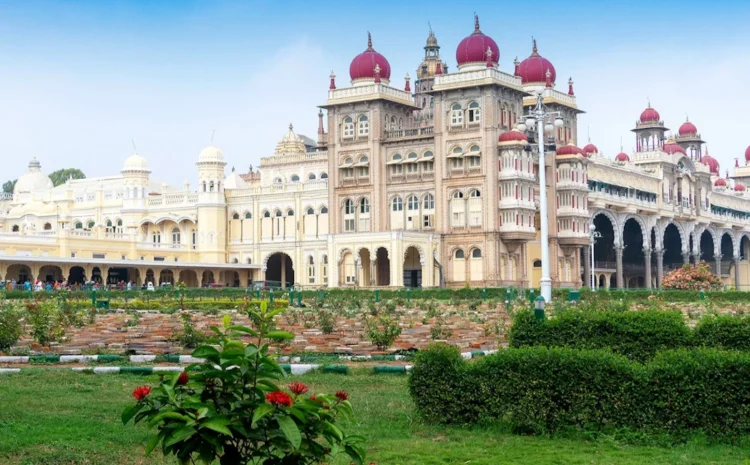
Discovering Mysore: The City of Palaces and Heritage
Mysore, located in the southern state of Karnataka, India, is a city that seamlessly blends royalty, tradition, and culture. Known as the “City of Palaces,” Mysore is steeped in history and is one of India’s most popular tourist destinations. From grand architectural marvels to bustling markets and fragrant sandalwood, Mysore offers a rich experience for visitors seeking to explore India’s cultural and historical legacy.
Historical and Cultural Significance
Mysore has been a seat of power for centuries, most notably as the capital of the Kingdom of Mysore, which was ruled by the Wadiyar dynasty for over 500 years. Under their patronage, the city flourished as a center for art, culture, and learning. The Wadiyars were known for their contributions to the development of music, literature, and architecture, making Mysore a hub of cultural richness.
The most famous ruler associated with Mysore is Tipu Sultan, often referred to as the “Tiger of Mysore,” who fiercely resisted British colonization in the late 18th century. Tipu Sultan’s legacy is still remembered through landmarks like the Srirangapatna Fort and the nearby Tipu Sultan’s Summer Palace, both of which offer a glimpse into his life and times.
Mysore Palace: A Royal Gem
The crown jewel of Mysore’s attractions is the Mysore Palace, also known as the Amba Vilas Palace. This iconic palace is a magnificent example of Indo-Saracenic architecture, combining Hindu, Muslim, Rajput, and Gothic styles. Built in the early 20th century, the palace stands as a testament to Mysore’s royal grandeur, adorned with intricately carved wooden doors, stained glass windows, and sprawling courtyards.
At night, the palace is illuminated with nearly 100,000 bulbs, casting a golden glow that adds to its ethereal beauty. The palace is especially spectacular during the annual Mysore Dasara festival, when it becomes the focal point of celebrations that include grand processions, music, and dance performances. Dasara, celebrating the triumph of good over evil, is a major attraction for visitors from around the world.
Chamundi Hill and Chamundeshwari Temple
Overlooking the city is Chamundi Hill, which rises about 1,000 meters above sea level and is home to the famous Chamundeshwari Temple. This ancient temple is dedicated to the goddess Chamundeshwari, an incarnation of Durga, who is revered as the protector of Mysore. According to legend, the goddess killed the demon Mahishasura, from whom the city gets its name.
Visitors can either drive or climb the 1,008 steps that lead to the temple, with the journey offering breathtaking views of the city below. Halfway up the hill, you’ll find the imposing statue of Nandi, the sacred bull of Lord Shiva. The statue, carved out of a single stone, stands 15 feet tall and is a popular stop for devotees and tourists alike.
St. Philomena’s Church and Colonial Heritage
Mysore is not only about palaces and temples; it also showcases its colonial past through landmarks like St. Philomena’s Church, one of the largest cathedrals in India. Built in a neo-Gothic style in the 1930s, the church features towering spires and beautiful stained-glass windows that depict scenes from the life of Christ. The church’s architecture is inspired by the Cologne Cathedral in Germany and stands as a symbol of Mysore’s cosmopolitan heritage.
Mysore Zoo and Brindavan Gardens
Nature lovers will appreciate the Mysore Zoo, one of the oldest and most well-maintained zoos in India. Officially known as Sri Chamarajendra Zoological Gardens, the zoo is home to a diverse range of animals, including lions, tigers, elephants, and a variety of exotic birds. The lush greenery and spacious enclosures make it a pleasant place to spend a day with family and friends.
A short drive from the city is the Brindavan Gardens, located adjacent to the Krishnarajasagara Dam. The gardens are famous for their symmetrical design and musical fountain, which lights up in the evening, drawing crowds who come to enjoy the synchronized water and light show.
Mysore’s Art, Crafts, and Cuisine
Mysore is synonymous with sandalwood, silk, and craftsmanship. The city is known for its exquisite Mysore silk sarees, which are made from high-quality silk and feature intricate zari work. Visitors can also explore the Mysore Sandalwood Factory, where a variety of sandalwood products, from soaps to perfumes, are crafted.
Mysore’s local cuisine is another highlight of the city’s culture. The famous Mysore Masala Dosa, a crispy rice pancake filled with spicy potato filling, is a must-try. Sweet lovers can indulge in Mysore Pak, a rich dessert made from ghee, gram flour, and sugar. The city’s thriving food scene also includes traditional South Indian thalis, offering a range of flavors and textures.
Best Time to Visit
The ideal time to visit Mysore is between October and March, when the weather is pleasant and perfect for sightseeing. The cooler months make it easier to explore the outdoor attractions, especially during the festive Dasara season, which usually falls in October. Summers can be hot, but the evenings are generally cooler due to Mysore’s elevated location.
Conclusion
Mysore is a city that holds on to its royal past while embracing modernity. Its magnificent palaces, ancient temples, and colonial-era landmarks offer a window into a time of grandeur and cultural flourishing. Whether you’re exploring the rich history, enjoying the local cuisine, or shopping for artisanal crafts, Mysore promises an unforgettable journey through India’s heritage. The charm of this vibrant city continues to captivate visitors, making it a must-visit destination in South India.